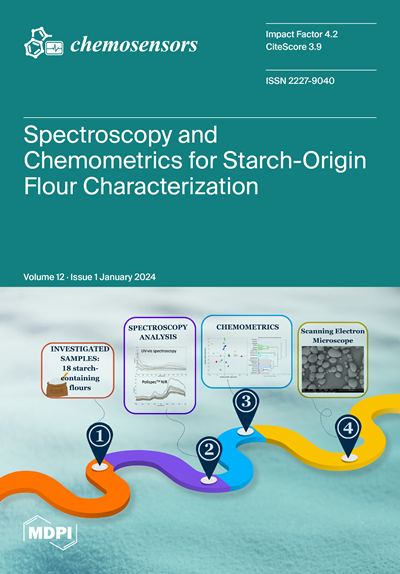分子印迹聚合物修饰碳电极用于电化学传感器的开发:在制药、食品安全、环境监测和生物医学分析中的应用
IF 3.7
3区 工程技术
Q2 CHEMISTRY, ANALYTICAL
引用次数: 0
摘要
本文综述了利用功能化碳电极和分子印迹聚合物(MIPs)在药学、食品安全、污染物环境监测和生物医学分析等领域选择性检测有机化合物的电化学传感器的最新进展。主要目标包括爆炸性化合物、染料、抗氧化剂、疾病生物标志物、药物、抗生素、过敏原、杀虫剂和病毒。在简要概述分子印迹原理后,探讨了最重要的应用。随后讨论了功能单体的选择。值得注意的是,介绍了各种类型的碳电极,特别强调了丝网印刷的碳电极。介绍和讨论了最常用的MIP沉积技术,如电聚合、滴铸和化学接枝。介绍了循环伏安法、差分脉冲伏安法、方波伏安法和电化学阻抗谱等电化学转导技术。最后,综述总结了用MIPs修饰的碳电极的潜在未来方向和主要局限性。本文章由计算机程序翻译,如有差异,请以英文原文为准。
Carbon Electrode Modified with Molecularly Imprinted Polymers for the Development of Electrochemical Sensor: Application to Pharmacy, Food Safety, Environmental Monitoring, and Biomedical Analysis
This review aims to elucidate recent developments in electrochemical sensors that use functionalized carbon electrodes with molecularly imprinted polymers (MIPs) for the selective detection of organic compounds in diverse fields including pharmacy, food safety, environmental monitoring of pollutants, and biomedical analysis. The main targets include explosive compounds, dyes, antioxidants, disease biomarkers, pharmaceuticals, antibiotics, allergens, pesticides, and viruses. Following a brief overview of the molecular imprinting principle, the most significant applications are explored. The selection of the functional monomer is subsequently discussed. Notably, various types of carbon electrodes are presented, with a particular emphasis on screen-printed carbon electrodes. The most commonly employed techniques for MIP deposition such as electropolymerization, drop casting, and chemical grafting are introduced and discussed. Electrochemical transduction techniques like cyclic voltammetry, differential pulse voltammetry, square wave voltammetry, and electrochemical impedance spectroscopy are presented. Lastly, the review concludes by examining potential future directions and primary limitations concerning carbon electrodes modified with MIPs.
求助全文
通过发布文献求助,成功后即可免费获取论文全文。
去求助
来源期刊

Chemosensors
Chemistry-Analytical Chemistry
CiteScore
5.00
自引率
9.50%
发文量
450
审稿时长
11 weeks
期刊介绍:
Chemosensors (ISSN 2227-9040; CODEN: CHEMO9) is an international, scientific, open access journal on the science and technology of chemical sensors published quarterly online by MDPI.The journal is indexed in Scopus, SCIE (Web of Science), CAPlus / SciFinder, Inspec, Engineering Village and other databases.
 求助内容:
求助内容: 应助结果提醒方式:
应助结果提醒方式:


